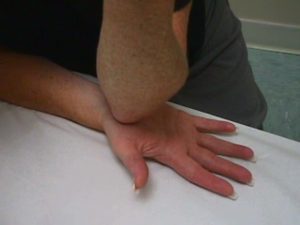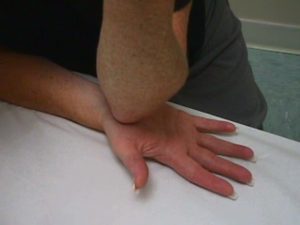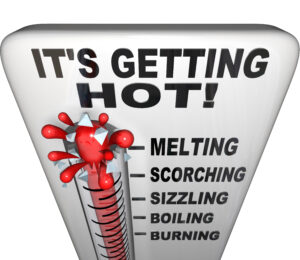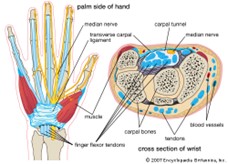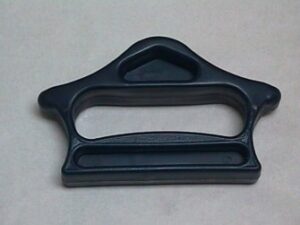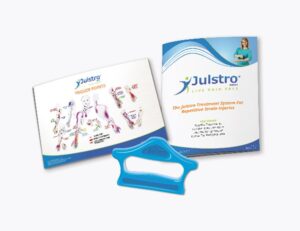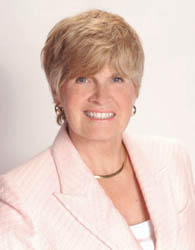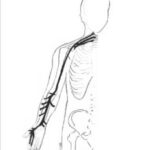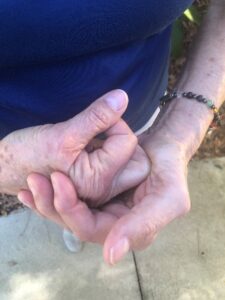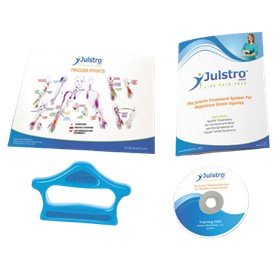Why I Developed Natural Treatments For Carpal Tunnel Pain
Author: Julie Donnelly, LMT – The Pain Relief Expert
Editor: Dr. Steve Chaney
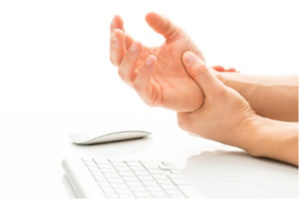 In 1997 I had wrist pain that was so incredibly severe that I couldn’t take my left hand from flat on a table and bring my thumb up to two o’clock. I couldn’t pick up a pen, never mind write with it, and the pain was like someone was cutting my wrists with a hot knife. It closed down my massage therapy business and was forcing me to think what I could do to support myself for the rest of my life!
In 1997 I had wrist pain that was so incredibly severe that I couldn’t take my left hand from flat on a table and bring my thumb up to two o’clock. I couldn’t pick up a pen, never mind write with it, and the pain was like someone was cutting my wrists with a hot knife. It closed down my massage therapy business and was forcing me to think what I could do to support myself for the rest of my life!
I was told I had carpal tunnel syndrome (CTS) and that I needed surgery, but I knew that scar tissue was going to fill the space, so that’s not something I was willing to do. Also, I knew that cutting the bridge to the carpal tunnel would weaken the thumb muscle, so another reason I didn’t want surgery.
It took a LOT of thinking, but I finally figured out how to solve the problem by treating muscles from my neck to my thumb, each of which was putting a strain/pressure onto the median nerve. The median nerve is the nerve that causes the symptoms of carpal tunnel syndrome (numbness, tingling, pain).
And it worked! I was completely out of pain and back to work again! I was thrilled!!!
Muscles Affecting The Carpal Tunnel
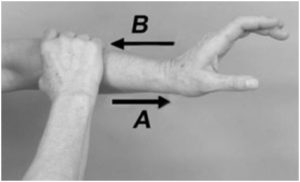 The muscles on the top of your arm (B) are called the Extensors.
The muscles on the top of your arm (B) are called the Extensors.
Your extensors originate at your elbow and insert into the carpal bones (back of your hand) and into your fingertips.
Your Flexor muscles (A) are on the underside of your forearm.
The flexors also originate at your elbow, they come down your forearm and merge into the tendon at your wrist. The tendons then go through your carpal tunnel and then insert into your hand and fingers.
When your hand is flat on a table and your extensors start to contract, you lift up your hand (B). But you can see that the flexors (A) on the underside of your forearm will need to lengthen to allow this movement.
When your flexors are tight (commonly from repetitive movements) they won’t lengthen to allow your extensors to pick up your hand, and the taut flexor tendons may trap your median nerve in your carpal tunnel. This is a major cause of carpal tunnel syndrome because the nerve is being trapped right in the carpal tunnel. It was one of the primary keys to my symptoms, and an important part of the carpal tunnel treatment protocol.
Why I Developed Natural Treatments For Carpal Tunnel Pain
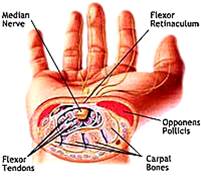 As you look at this graphic, you’ll see the flexor tendons surrounding the median nerve as they all pass through the carpal tunnel. Also, notice the carpal bones, which are where the extensor muscles attach. Finally look at the thumb muscle called Opponens Pollicis. This muscle originates on the bridge to the carpal tunnel (called the Flexor Retinaculum), and when the muscle contracts you bring your thumb into the center of your palm.
As you look at this graphic, you’ll see the flexor tendons surrounding the median nerve as they all pass through the carpal tunnel. Also, notice the carpal bones, which are where the extensor muscles attach. Finally look at the thumb muscle called Opponens Pollicis. This muscle originates on the bridge to the carpal tunnel (called the Flexor Retinaculum), and when the muscle contracts you bring your thumb into the center of your palm.
The flexor retinaculum is the ligament that is severed during carpal tunnel release surgery. As you look at how close the median nerve is to the flexor retinaculum you can see where a potential surgical mistake could sever the nerve. This accident disables the hand and isn’t reversible. Also, severing the flexor retinaculum means your thumb loses its base, and you lose strength
This is the reason I refused surgery and sought a different carpal tunnel treatment.
As I studied each muscle and saw how they each impacted the median nerve, I realized that if I released the spasms in each muscle that it would take the pressure off the nerve. And, sure enough, that’s exactly what happened!
It took me about 90 minutes to figure this out (it will only take you 15 minutes to do all of the carpal tunnel treatments to yourself), but in just that short amount of time I released ALL of the pain and numbness in my hand and wrist. I was beyond being thrilled — I saved my career!
Relieve Carpal Tunnel Pain Naturally
The reason you feel pain at a location that is different from the area of a muscle spasm is pretty simple to explain:
If you pull your hair at the end, it will hurt where it inserts at your scalp. But you don’t need to massage your scalp, you don’t need pain pills, and you definitely don’t need brain surgery to stop the pain.
You just need to let go of your hair!
If The Extensors Are The Problem
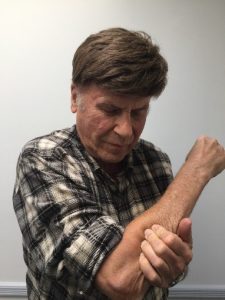 This same principle applies with muscles. The pain will refer to the insertion point in the wrist or hand.
This same principle applies with muscles. The pain will refer to the insertion point in the wrist or hand.
If the extensor muscles are the problem, the solution is to until the knot in the muscle by applying direct pressure onto the spasm and holding it for about 30 seconds.
For example, if the knot is in the extensor muscles in your arm, you can apply pressure on your extensor muscles by following the picture on the left and pressing deeply into the muscle fibers.
It will hurt, and you’ll probably feel it refer all the way to your wrist and hand.
Hold the pressure for at least 30 seconds, longer if you want, and then move your fingers 1-2” in either direction. You’ll keep feeling tender points. Each of them is a spasm that is causing pain in your wrist.
Then turn your arm over and use your fingers to press into the muscles on the underside of
If Your Flexors Are The Problem
To release the spasms in your thumb muscle, place your opposite elbow into the thick portion of your thumb as shown in the picture to the left.
Step 2:
Use your fingertips to guide your elbow along the muscle. Move your elbow in a line from the center of your wrist to the base of your thumb.
Use sufficient pressure to really feel the muscle and the tender points which are spasms in the muscle fibers.
When you find a spasm, hold the pressure for 30 seconds and then deeply move back and forth a little bit.
If you are experiencing hand/wrist pain or numbness, before you make the decision to go for surgery it is worthwhile to check out my Julstro System For Hand/Wrist Pain and Numbness. You can’t undo surgery!
Wishing you well,
Julie Donnelly
These statements have not been evaluated by the Food and Drug Administration. This information is not intended to diagnose, treat, cure or prevent any disease.
______________________________________________________________________________
My posts and “Health Tips From the Professor” articles carefully avoid claims about any brand of supplement or manufacturer of supplements. However, I am often asked by representatives of supplement companies if they can share them with their customers.
My answer is, “Yes, as long as you share only the article without any additions or alterations. In particular, you should avoid adding any mention of your company or your company’s products. If you were to do that, you could be making what the FTC and FDA consider a “misleading health claim” that could result in legal action against you and the company you represent.
For more detail about FTC regulations for health claims, see this link.
https://www.ftc.gov/business-guidance/resources/health-products-compliance-guidance
_______________________________________________________________________
About The Author
 Julie Donnelly has been a licensed massage therapist since 1989, specializing in the treatment of chronic pain and sports injuries. The author of several books including Treat Yourself to Pain-Free Living, The Pain-Free Athlete, and The 15 Minute Back Pain Solution.
Julie Donnelly has been a licensed massage therapist since 1989, specializing in the treatment of chronic pain and sports injuries. The author of several books including Treat Yourself to Pain-Free Living, The Pain-Free Athlete, and The 15 Minute Back Pain Solution.
Julie has also developed a proven self-treatment program for the symptoms of carpal tunnel syndrome.
She has a therapy practice in Sarasota, Florida, and she travels around the USA to teach massage and physical therapists how to do the Julstro Method, and she also teaches self-treatment clinics to anyone interested in taking charge of their own health and flexibility.
She may be reached at her office: 919-886-1861, or through her website: www.FlexibleAthlete.com
About The Editor
 Dr. Chaney has a BS in Chemistry from Duke University and a PhD in Biochemistry from UCLA. He is Professor Emeritus from the University of North Carolina where he taught biochemistry and nutrition to medical and dental students for 40 years.
Dr. Chaney has a BS in Chemistry from Duke University and a PhD in Biochemistry from UCLA. He is Professor Emeritus from the University of North Carolina where he taught biochemistry and nutrition to medical and dental students for 40 years.
Dr. Chaney won numerous teaching awards at UNC, including the Academy of Educators “Excellence in Teaching Lifetime Achievement Award”. Dr Chaney also ran an active cancer research program at UNC and published over 100 scientific articles and reviews in peer-reviewed scientific journals. In addition, he authored two chapters on nutrition in one of the leading biochemistry text books for medical students.
Since retiring from the University of North Carolina, he has been writing a weekly health blog called “Health Tips From the Professor”. He has also written two best-selling books, “Slaying the Food Myths” and “Slaying the Supplement Myths”. And most recently he has created an online lifestyle change course, “Create Your Personal Health Zone”. For more information visit https://chaneyhealth.com.
For the past 45 years Dr. Chaney and his wife Suzanne have been helping people improve their health holistically through a combination of good diet, exercise, weight control and appropriate supplementation.

